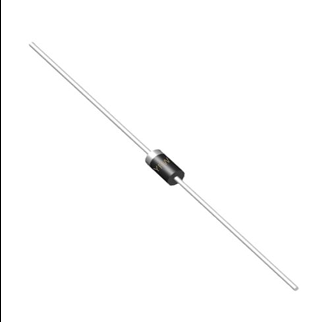Analysis Methods
Date:2025-06-17 Categories:Product knowledge Hits:283 From:Guangdong Youfeng Microelectronics Co., Ltd
4. Analysis Methods
4.1 Electrical Simulation
Electrical simulation tools, such as SPICE (Simulation Program with Integrated Circuit Emphasis) and its various derivatives, are widely used to analyze the behavior of
fast recovery diodes in circuits. In a SPICE simulation, a diode model is incorporated into the circuit schematic. The model parameters, including
trr,Qrr,VF, andVBR, are set according to the datasheet of the actual diode. By simulating the circuit under different operating conditions, engineers can obtain the voltage and current waveforms across the diode, as well as calculate the power losses and efficiency of the overall circuit. This helps in predicting the performance of the circuit before building a physical prototype, allowing for design optimization and troubleshooting.
4.2 Experimental Measurement
Experimental measurement is essential for validating the simulation results and obtaining accurate data on the performance of
fast recovery diodes. As described earlier, a test circuit can be built to measure parameters such astrrandQrr. In addition to using an oscilloscope to measure voltage and current waveforms, other instruments such as a power analyzer can be used to measure the power losses in the diode accurately. By varying the operating conditions, such as the input voltage, load resistance, and switching frequency, a comprehensive understanding of the diode's performance can be obtained. Experimental measurement also helps in identifying any discrepancies between the actual diode behavior and the simulation model, which can then be used to improve the accuracy of the simulation model.
4.3 Thermal Analysis
fast recovery diodes generate heat during operation due to conduction losses and switching losses. Excessive heat can lead to a rise in the junction temperature of the diode, which may degrade its performance and reduce its lifespan. Thermal analysis is carried out to understand the heat - generation and heat - dissipation characteristics of the diode. This can be done through numerical simulations using computational fluid dynamics (CFD) software or by experimental methods, such as measuring the temperature of the diode using thermal imaging cameras or thermocouples. By analyzing the thermal behavior, appropriate heat - sink designs can be selected or optimized to ensure that the junction temperature of the diode remains within the allowable operating range.
5. Conclusion
Analyzing
fast recovery diodes involves a comprehensive understanding of their structure, working principle, key parameters, and analysis methods. Key parameters such as reverse recovery time, reverse recovery charge, forward voltage drop, and reverse breakdown voltage determine the performance and suitability of the diode for different applications. Electrical simulation, experimental measurement, and thermal analysis are important tools for evaluating and optimizing the performance of
fast recovery diodes in power electronics circuits. With the continuous development of power electronics technology, a more in - depth analysis of fast recovery diodes will contribute to the design of more efficient, reliable, and high - performance power conversion systems.

Previous:
Classification, Structure, and Principle of MOSFET
Next:
Advantages of Rectifier Diodes 1
